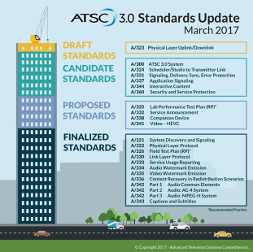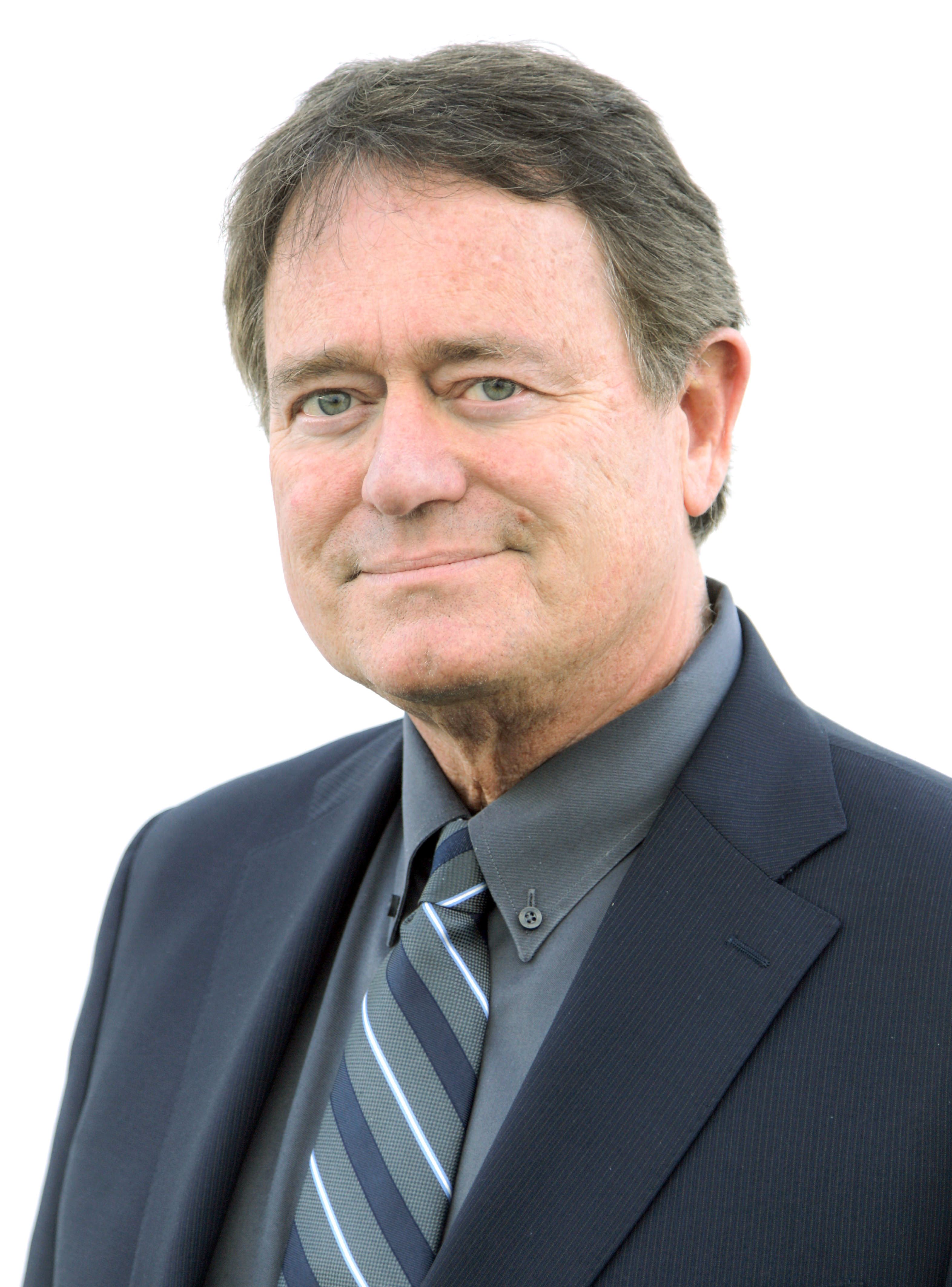A ‘Tipping Point’ for ATSC 3.0 Standards Development
Click on the Image to Enlarge
With apologies, it has been awhile since my last blog. Lots of work conspired with lots of travel to make it difficult to focus on this. Anyway, here we are at the beginning of March.
The amount of progress made over the last couple of months on the ATSC 3.0 suite of standards is quite impressive. In the last blog, I provided a table showing where the various documents that comprise ATSC 3.0 were in the developmental and approval process. Some very creative folks in ATSC came up with a graphic that better explains where we are at any point in time. You may have already seen the “skyscraper” graphic on the ATSC website or in presentations at various conferences. Fig. 1 is the latest version.
Fig. 1

With nearly two dozen documents comprising the ATSC 3.0 system, it is difficult to remember where things stand without a scorecard. Or, better yet, a graphic. The skyscraper is updated once a month; the latest version can be found on the ATSC website.
I am pleased to report that this month marks the tipping point insofar as completion of ATSC 3.0 is concerned: more standards have been completed than are in process.
As I have mentioned in previous blogs, work in ATSC is open to all with a direct and material interest. There are several ways that individuals can participate in, or at least monitor, the progress of ATSC 3.0, as summarized below:
The professional video industry's #1 source for news, trends and product and tech information. Sign up below.
· For ATSC members – If your company is a member of ATSC, you can participate in the work of the various committees. Before setting up an account in the ATSC Members area you will want to check with your company’s membership representative. Some companies have specific rules and procedures for participation in a Standards Development Organization such as ATSC. Member organizations are listed on the ATSC website.
· Become an ATSC member – There are two classifications of membership: Voting Member and Observer. Details on each can be found on the ATSC website.
· Get on the ATSC Newsletter mailing list – The newsletter is sent by email once a month. You can sign up for the newsletter on the ATSC website.
· Download the ATSC 3.0 standards documents – All ATSC Standards, Candidate Standards, and Recommended Practices can be downloaded at no charge from the ATSC website. Twelve completed ATSC 3.0 Standards and RPs were posted at this writing. Additional documents will be added in the coming weeks.
If you are unfamiliar with the structure of standards document, it is easy to get lost in the pages of detail. There are, however, some common elements that run through all ATSC documents that help readers understand how a particular standard fits in with the overall 3.0 system.
Every ATSC Standard and Recommended Practice begins with a statement of the scope of the document, and sometimes includes background information as well. This can be found in Section 1. Referenced documents are listed in Section 2. Terms are defined in Section 3. A general overview of the system described by the Standard is typically given in Section 4. This high-level summary can be very helpful in understanding the overall architecture of the system described by the document. In addition, implementation examples are sometimes provided in one or more Annexes.
Perhaps the best single document for an overview of the entire ATSC 3.0 system is A/300, which has just been published as a Candidate Standard. This document provides in Sections 4 and 5 a high-level summary of the overall ATSC 3.0 system, and explains how the elements of the system fit together. Annex B describes a variety of usage scenarios. Note that this document, and the other Candidate Standards, is a work in process. Some sections and/or text may change, and in some cases details that are still under consideration by the appropriate committee are highlighted.
We are making excellent progress toward completion of ATSC 3.0. A lot of work remains to be done, however; in particular, developing Recommended Practices that provide implementation guidance to TV station engineers.
Jerry Whitaker is Vice President for Standards Development at the Advanced Television Systems Committee. He can be reached via TV Technology.
For more on this subject, visit our ATSC 3.0 silo.

